To achieve the first conversion lift, PPC optimization often requires a lengthy multi-month ramp-up. This delay in progress can hamper momentum.
However, unlocking a few quick wins early on could accelerate your path to performance payoff. Rather than overhauling everything at once, you can identify common fast opportunity areas that will produce short-term traction.
This guide from the UAWC Agency outlines frameworks for identifying low-hanging fruit across accounts during initial audits.
Low-Hanging Fruit Keyword Gaps

One effective way to quickly boost PPC traction is to aggressively expand existing campaigns by applying relevant, high-potential keyword gaps that are missing search volume.
What does this mean exactly?
Essentially, look for semantically related keywords and topics pertinent to your products/services that have not yet been targeted. These could include different product variants, related categories, location modifiers, technical specifications, etc.
For example, if you sell basketball sneakers, related gaps may be:
- Different shoe models (Nike Lebron, Air Jordan)
- Materials (leather basketball shoes)
- Types (indoor, outdoor, men's, women's)
- Users (youth, professional)
- Descriptors (durable, lightweight)
The goal is to rapidly scale up keyword relevance in campaigns during initial setup, using tools that can automatically suggest volumes of additional opportunities.
Instead of simply guessing these, you can leverage tools such as:
- Google Keyword Planner for ID volume intersections;
- SEMRush for related keywords by category;
- Search query analysis to spot frequent variants;
- Competitor click-stream mining to expose gaps;
- Google Smart bidding to direct more of your budget to the best-performing keywords.
This strategy works by instantly aggregating additional demand potential beyond your current visibility. Trimming weaker performers comes later - first focus on capturing the available traffic.
Untapped Audience Analysis

Analyzing and expanding your Google Ads audience targeting offers a quick win beyond existing reach.
The idea is to find more precise pockets of qualified demand by:
- Breaking down broad targetings like age, gender, and interests into smaller segments
- Combining multiple sub-segments together for greater specificity
- Using bid adjustments to optimize spending on better-performing groups
For example:
Instead of targeting all "fitness enthusiasts", split them into subgroups like yoga, running, CrossFit. Then target men aged 35-45 interested in running and CrossFit, and bid higher due to engagement.
The key is to subdivide generalized targeting into smaller, higher-intent clusters.
You can study metrics like clicks and conversions by the audience in order to uncover standout pockets you can refine and optimize to achieve better results faster.
In-Depth Targeting Strategies
Think of broad audience targeting as a big fishing net – sure, you might catch something, but the chances are a lot of it won't be what you were looking for. With a focused approach, your ads become laser-targeted harpoons, hitting those essential pockets of high-intent buyers.
Here's how to level up:
- Affinity Audiences: Discover groups interested in specific subjects (golf, cooking, mountain biking, etc.) Reach qualified prospects based on their passions and lifestyle, not just basic demographics.
- Custom Audiences: Tap into those who've shown interest in your brand before. Use website visitor data, email lists, or customer relationship management (CRM) tools to re-engage past shoppers and lookalike audiences based on their activity.
- Remarketing Lists: Create focused ad campaigns aimed at bringing users back to finalize a purchase or explore related products. Re-engage people who have abandoned a shopping cart or interacted with your content by placing personalized and relevant ads.
- Layering: Supercharge your targeting by combining these sub-segments. For instance, a home goods store could target users with an interest in interior design who've also looked at their website within the last week. That's precision casting for serious shoppers!
Buyer Persona Matching
Your ideal customer profile isn't just data points—it's a real person with dreams, pain points, and a way of making decisions. When audience targeting aligns with those traits, it's powerful.
Here’s how you do it:
- Speak their language: Each person or type will respond to different messages. A marathon runner responds differently to ads than a beginner yogi. Tweak your ad copy and imagery to address their unique goals and fears.
- Address objections: Don't just promote features. Anticipate doubts a new client might have and subtly address them. "Workout gear that moves with you, no matter your experience level," reassures newbies with concerns whilst giving experienced buyers a message about premium quality.
Underperforming Campaign Diagnostics

Think of it like triage at the ER - you focus on the most urgent cases first. Don't waste time on campaigns that are just slightly under the weather. Quickly identify those in critical condition to significantly impact your results.
Look for campaigns with high impressions but low click-through rates, indicating relevancy gaps. Your ads are getting seen, but they're not hitting the mark. Here's what may be going wrong:
Common Quick Culprits:
- Overly broad match types mismatching searcher intent: Casting too wide a net brings in unqualified or irrelevant clicks, lowering your CTR. It's like advertising gourmet dog food to people searching for "pet supplies" - a lot of eyes but minimal interest from good buyers.
- Poor geographic targeting missing regional nuance: Ignoring regional interests and search behavior wastes spending. Someone looking for "hiking boots" in Alaska likely has different needs than someone in Florida.
- Valuable audiences seeing irrelevant messaging: Your ads don't resonate with their interests and concerns. Talking luxury skincare to bargain hunters won't inspire clicks. Think like your ideal customer.
Troubleshooting Guides
Here's your diagnostic checklist when hunting down those campaign killers:
- Match Type Mayhem: Is there a huge gap between impressions for broad match and exact match keywords? That signals wasted spend on irrelevant searches. Dig into your search term reports to identify bad matches and then either refine or exclude them.
- Geo Ghosted: Check for high search volume but zero conversions by region. There may be local terms or trends you're missing. Tailor ads and target areas specifically. Bonus: This can uncover lucrative new markets!
- Video Viewership Woes: Frequent low content ratings on video ads? Your visuals and messaging aren't engaging the audience. Reassess them or try a completely different creative approach.
Focus on the Worst Ones First
Assess how underperforming your match types, geographic targeting, and ad creatives are on the worst campaigns. Even small fixes here can deliver serious, immediate results. This isn't complete surgery. It's stopping major bleeding while prepping for future improvements.
Fast Follow Landing Page Variations

Think of your top-performing ad as a billboard for your landing page. If the billboard does its job and attracts attention, the landing page has to deliver, or those clicks don't convert. Small tweaks here can yield huge gains by improving on what's already working well.
The 'Fast Follow' Framework
- Identify Your MVPs: Don't just look at overall performers. Analyze which landing pages support your best-performing ads. Look for high click-through rates, strong conversion metrics, and positive user feedback (session replays and low bounce rates can help here).
- Dissect the Winners: Figure out what's resonating:
- Headline: Does it address a major pain point or speak to an aspiration directly?
- Value Proposition: Is it clear, concise, and addresses the needs of your target audience?
- Call-to-Action: Is there a strong sense of urgency or a compelling benefit driving the click?
- Visuals: Do images/videos reinforce the message and establish an emotional connection?
- Content Order: Is the information presented logically, guiding the visitor towards action?
- Hypothesize for Impact: Based on your insights, prioritize relevant elements for A/B testing:
- Headline Variations: Try more benefit-focused language that matches what visitors have searched for.
- USP Spotlight: If a certain aspect resonates in your ads, emphasize it further on the page (think social proof, testimonials, or clear guarantees).
- CTA Experimentation: Test button wording, color, and even placement on the page for impact.
- A/B Test Your Hypotheses: Tools like Google Optimize make this fast and easy. Set up variations with specific elements changed based on your insights. Keep it focused on just 1-2 changes per test for clarity.
Additional Quick Tips
- Trust Seals: If fierce competition is a factor in your space, adding trust seals can be a tiny touch with a major impact, especially near any checkout elements.
- Mobile Matters: Always optimize and test your variations on mobile devices to ensure a seamless experience in that crucial area.
Scaling Your Efforts
Focusing on an overhaul is tempting, but don't overlook the power of a series of small improvements. Create 5-10 "fast follow" variations focused on core elements you have gleaned from your best performers. These quick boosts in landing page relevance stack up significantly over time!
Friction Points Assessment

Analyzing which website pages have the highest exit rates offers a quick win opportunity as it identifies bottlenecks in the customer journey. Heat mapping, session recordings, form analytics, and checkout data shed light on where visitors hesitate or abandon their intent.
Your Diagnostic Toolkit
- Heat Mapping: See where users focus and how far they scroll in order to pinpoint distracting elements or poorly presented information.
- Session Recordings: Get a first-hand view of their behavior by monitoring hesitation, backtracking, or abandoned sections. Identify points where expectations aren't being met, or the steps get too complicated.
- Form Analytics: Find where form fields are causing issues. Check whether drop-off increases drastically at certain prompts. Streamline fields or change their order if possible.
- Checkout Data: Focus on abandoned carts, and check exit points within the process. Consider whether payment options are limited, shipping info isn't clear enough, or requiring account creation too early in the process feels off-putting.
Prioritize and Identify Patterns
- Focus on High-Exit Pages: Look beyond just your homepage. Pages, where customers make decisions (product listings, pricing comparisons, trust-building sections), might need urgent attention.
- Match Problems to Causes: Here's how common pain points manifest:
- Confusion: Information is unclear, the design is disorienting on mobile, or the visuals don't support the text content.
- Missing Information: Shoppers can't find the necessary details about a product or shipping/return policies or cannot compare items easily.
- Overload: Excessive text, too many choices or poorly timed pop-ups disrupting browsing.
- Poor Navigation: Hard to find or take the next logical step, no search function, unclear site organization.
Targeted Micro-Improvements
Start with your top 2-3 worst offenders and aim to implement the following changes:
- Clarity Boosters: Add short captions with clearer intent. Organize info using bullets or visuals for faster scanning.
- Streamline: Minimize form fields or ask for essential info first. If long descriptions are unavoidable, consider adding short summaries next to them.
- Easy Navigation: Make links more prominent and descriptive. Add a search bar to help users find information quickly. Implement consistent "breadcrumb" menus for orientation.
Learning and Scaling
Addressing friction points has a ripple effect – what you learn fixing specific bottlenecks can prevent similar issues from occurring across your site. Keep analyzing, tweaking, and repeating! This consistent fine-tuning boosts user experience significantly.
Micro-Testing Ad Copy Experiments

In PPC marketing, small changes can generate huge gains. Instead of massive overhauls, which can disrupt performance, a continuous series of micro-tests will help you identify those diamonds in the rough at scale. Committing to this process unlocks exponential, ongoing improvement while avoiding unnecessary risk.
The "Test Kitchen" Approach
Think of this process less like a single experiment with bold hypotheses and more like having a constant test kitchen for new ad variations:
- Isolate Variables: Don't make big sweeping changes. Test one element at a time (headline style, a new CTA, benefit-focused vs feature-focused). This will clearly show what influences results.
- Controlled Pairs: Create matched ad groups where the element you're testing is the only change. Algorithms can easily measure differences. Tools like Google Ads Editor make this fast and easy to do across thousands of ads.
- Leverage Automation: Let the data decide the winners. As algorithms run, micro-improvements automatically become new norms while lower performers are replaced. Think of it as the survival of the fittest ad copy!
Beyond the Obvious
It's not just about keywords and main text:
- Headline Formatting: Does a question outperform a statement? Do numbers ("Save 15%") boost clicks more than general ("Big Savings")?
- Call-to-Action Phrasing: Does urgency ("Order Today") beat low-pressure options ("Learn More")? Or does specificity ("Request a Quote") convert better than a vague click?
- Extension Impact: Experiment with layout, how many extensions you use, and even the order they appear in. Sometimes small changes here affect perceived ad size and influence overall CTR.
Why Micro-Testing Wins For You
- Constant Learning Cycle: This isn't about one winning idea. It's about an ethos of perpetual refinement. Data constantly informs future ad creation, not just hunches or past wins.
- Compounding Results: Even a small increase in CTR or conversion rate translates to a major impact when rolled out across a large account. It's the long game for sustainable success.
- Scalability: Whether you run hundreds or thousands of ads, this process works the same way. Small tweaks across campaigns add up exponentially.
Prioritizing PPC Optimization Opportunities
With so many potential areas needing improvement, deciding where to focus first can be a hurdle.
Rather than tackling every underperforming element simultaneously, with the risk of being overwhelmed, use an optimization priority matrix.
This simple framework enables you to rate different optimization opportunities based on the following:
- Revenue Impact Potential - the incremental gains for goal metrics by improving this element
- Ease of Implementation - the level of lift effort needed in terms of resources, time, and access
- Severity of Underperformance - how significantly this aspect trails your competitors or internal goals
With these factors weighted, assess and score each opportunity to establish an overall priority level.
For example:
|
Optimization Opportunity |
Revenue Impact |
Ease of Implementation |
Underperformance Severity |
Total Score |
|
Keyword Gap Analysis |
High |
Medium |
Severe |
8 |
|
Landing Page Split Testing |
High |
Easy |
Average |
10 |
|
Ad Copy Refresh |
Medium |
Easy |
Average |
7 |
On the basis of this assessment, creating new landing page variations emerges as the logical first area to begin optimization efforts, followed by addressing keyword gaps based on the impact vs. level of effort scores.
Monitoring Early Warning Signs

Quick wins are fantastic, but momentum only sticks if you can identify and address problems before they sabotage your gains. Staying vigilant means keeping your pulse on key indicators so you can diagnose issues and course-correct quickly.
Your Early Warning Dashboard
Don't rely solely on periodic campaign reports. Set up a dashboard for vital daily checks. Include the following:
- Daily Click-Through Rate Trends: Are clicks declining on a specific ad, keyword, or campaign-wide? Sudden drops suggest misfires in targeting or ad relevance.
- Bounce Rates by Landing Page: Is there a sudden spike in bounces on previously strong pages? This could signal technical issues, unexpected audience mismatches, or changes in search intent you need to address.
- Top Exit Pages on Site: See where users most abandon their journey. High exits near purchase areas can be especially damaging. Analyze those pages for clarity and address friction points.
- Impression Share Metrics: Are your ads appearing at optimal levels across searches? Declines here indicate lost market share, potentially due to budget restrictions, higher competitor bids, or declining quality scores.
- Search Terms (Queries): Identify what people were actually searching for when your ads appeared. This highlights where relevance fails and inspires new negative keywords, which can be used to tighten up targeting.
- Auction Insights & CPC Bidding: Losing market share due to bids? Changes in your position (or average CPC) may signal a need to revise budget caps or experiment with bidding strategies in order to stay competitive.
The Power of Proactivity
Daily checks identify trends far faster than a week-old report. Here's why this agility matters:
- Halt Downward Spirals: Spotting a sudden drop in CTR or high bounce rates gives you the power to investigate before the problem compounds. Addressing it quickly minimizes wasted spending.
- Uncover Opportunities: Impression share declines signal that there are audiences you might be missing out on. This can prompt ad expansion while rivals are complacent.
- Constant Honing Strategy: Identifying signs of trouble early gives you the time to develop specific optimizations. Consistent vigilance is key to keeping your entire account healthy through micro-fixes instead of crisis-mode overhauls.
The Big Picture Takeaway
Early warning monitoring should be ingrained in your PPC routine. Always analyze the context of any sudden shifts to prevent knee-jerk reactions.
But the big lesson is simple: Stay alert, identify anomalies, and adapt fast – that's where the real long-term wins lie.
Conclusion
Waiting months for paid search excellence impedes momentum going forward. But diagnosing accounts for fast high potential wins aligned to core goals kickstarts optimization earlier.
We have covered tactics for:
- Expanding relevant keywords
- Isolating disconnected audiences
- Fixing severely underperforming elements
- Optimizing top landing pages first
- Micro-testing ad copy on an ongoing basis
- Monitoring dashboards for early signals
Remember, quick wins are stepping stones toward wider success. Maintain these results and remain focused amid complexity; you will build incrementally on what works best.
Quickly uncovering granular opportunities sets a positive trajectory that converts searchers sooner at scale. Most accounts accelerate faster than conventionally expected by compounding marginal gains over time.

Alexey Chychyrko
With 11 years of rich experience, Alexey has established himself as a distinguished expert in digital marketing. As a Facebook Preferred Partner and Google Premier Partner, his proficiency extends to executing successful campaigns on TikTok, Bing, and YouTube. He is also certified in Google Analytics and Google Tag Manager, reinforcing his capability to tackle any technical hurdles. Alexey's mission is to scale businesses, helping them to outperform larger competitors through strategic ad placements and precise attribution models. When he's not immersed in the digital world, Alexey practices mindfulness, savors the warmth of hot Pu'er, and engages in martial arts.












2.png)
2.png)









